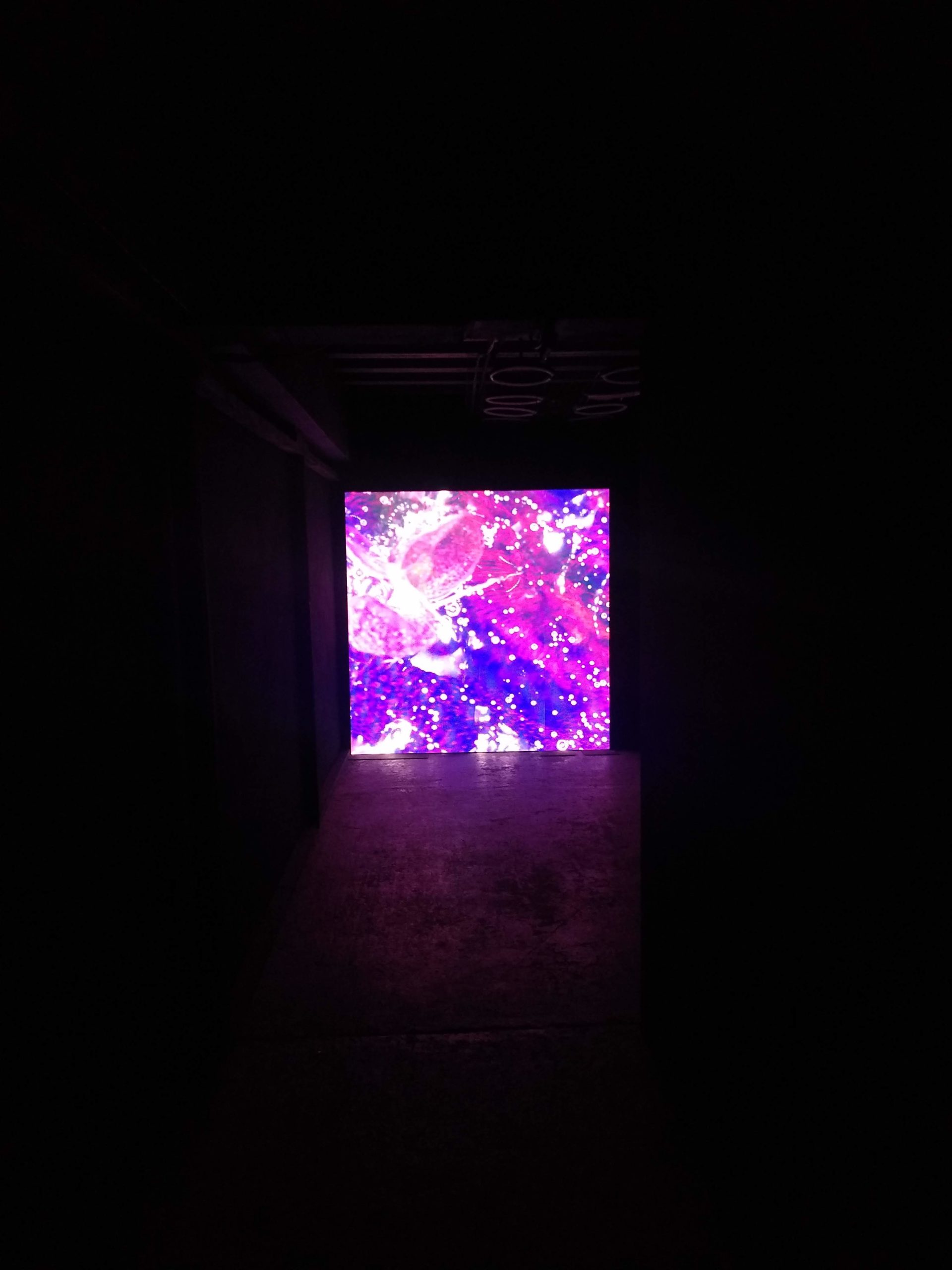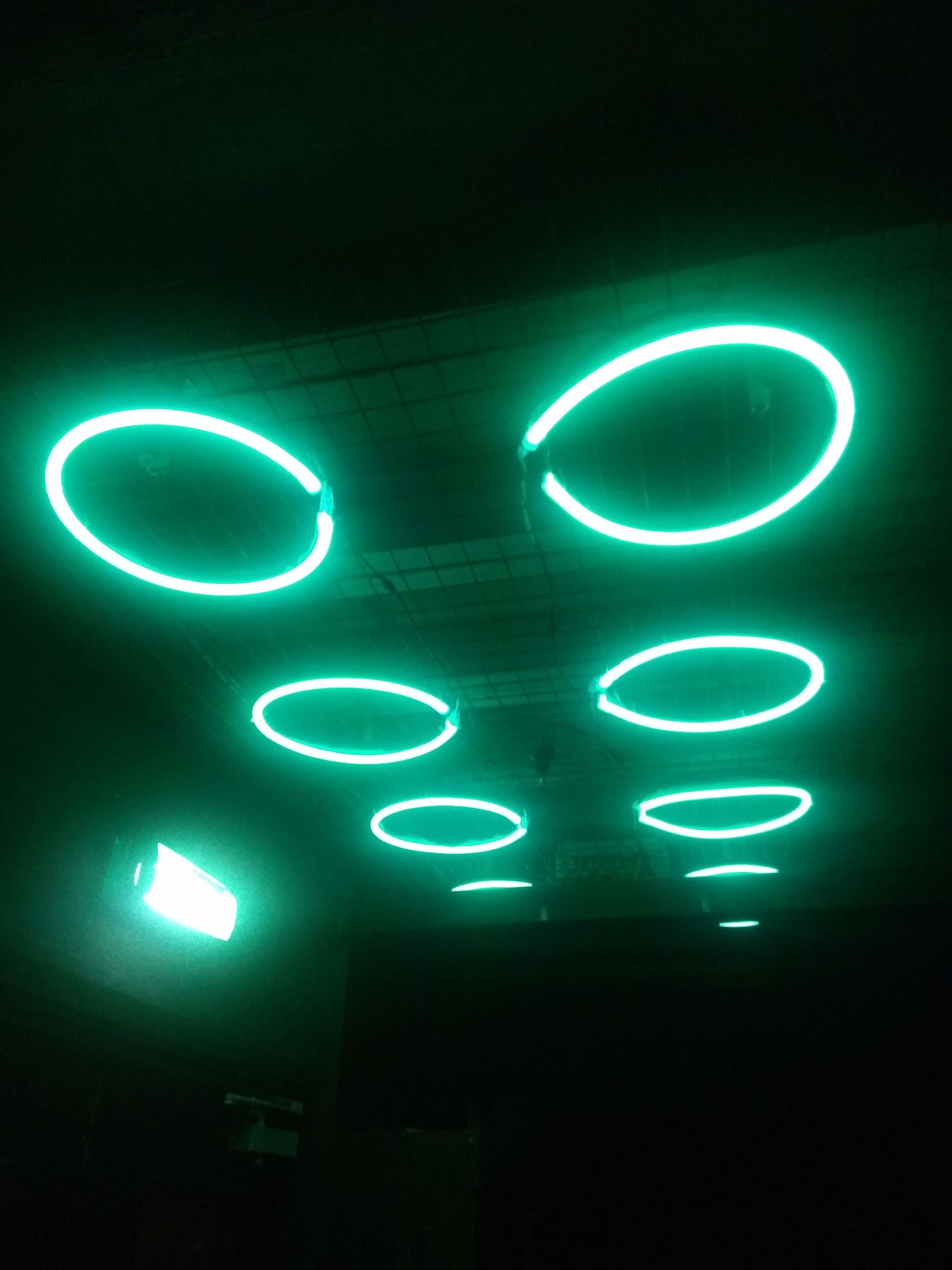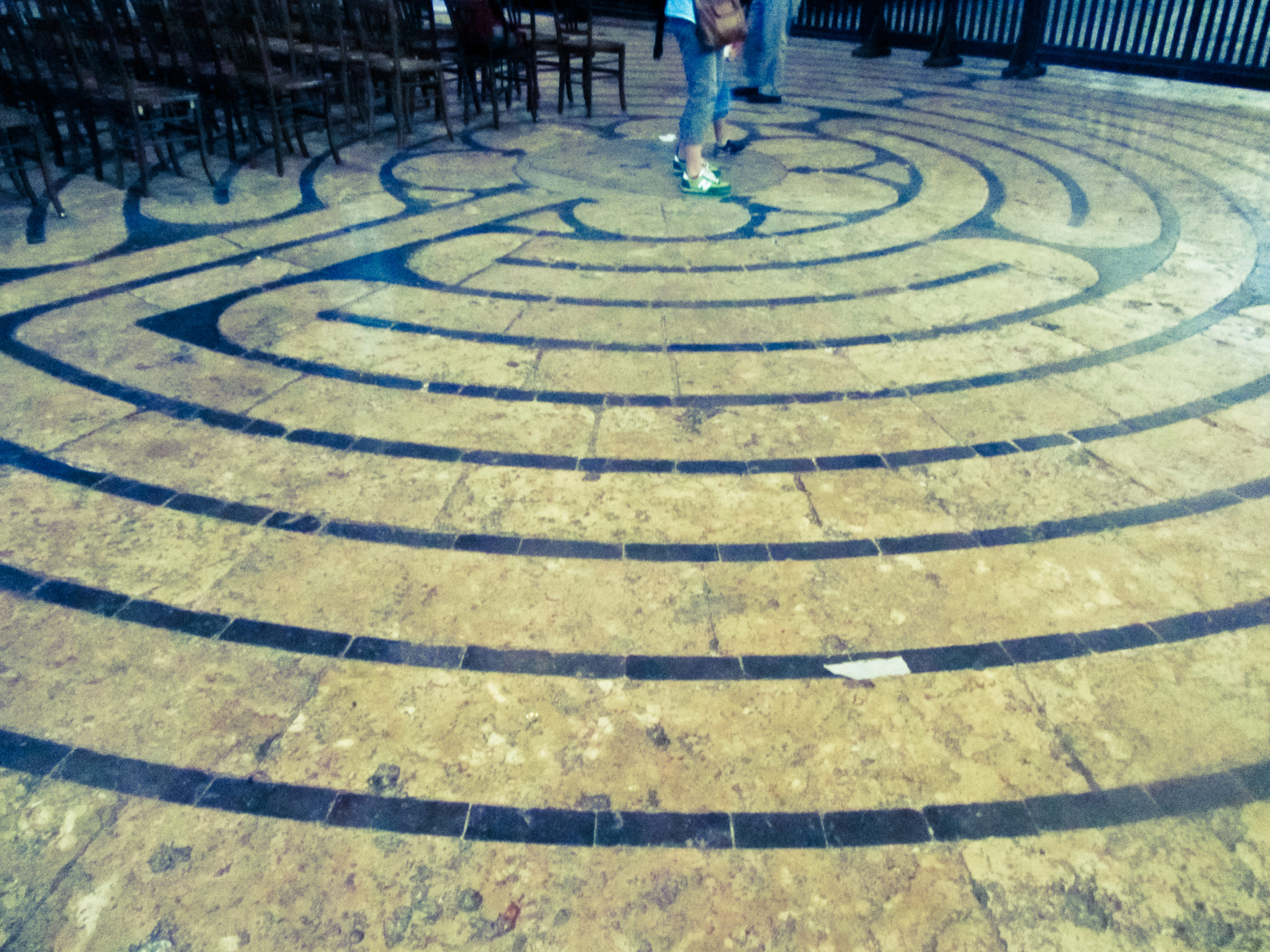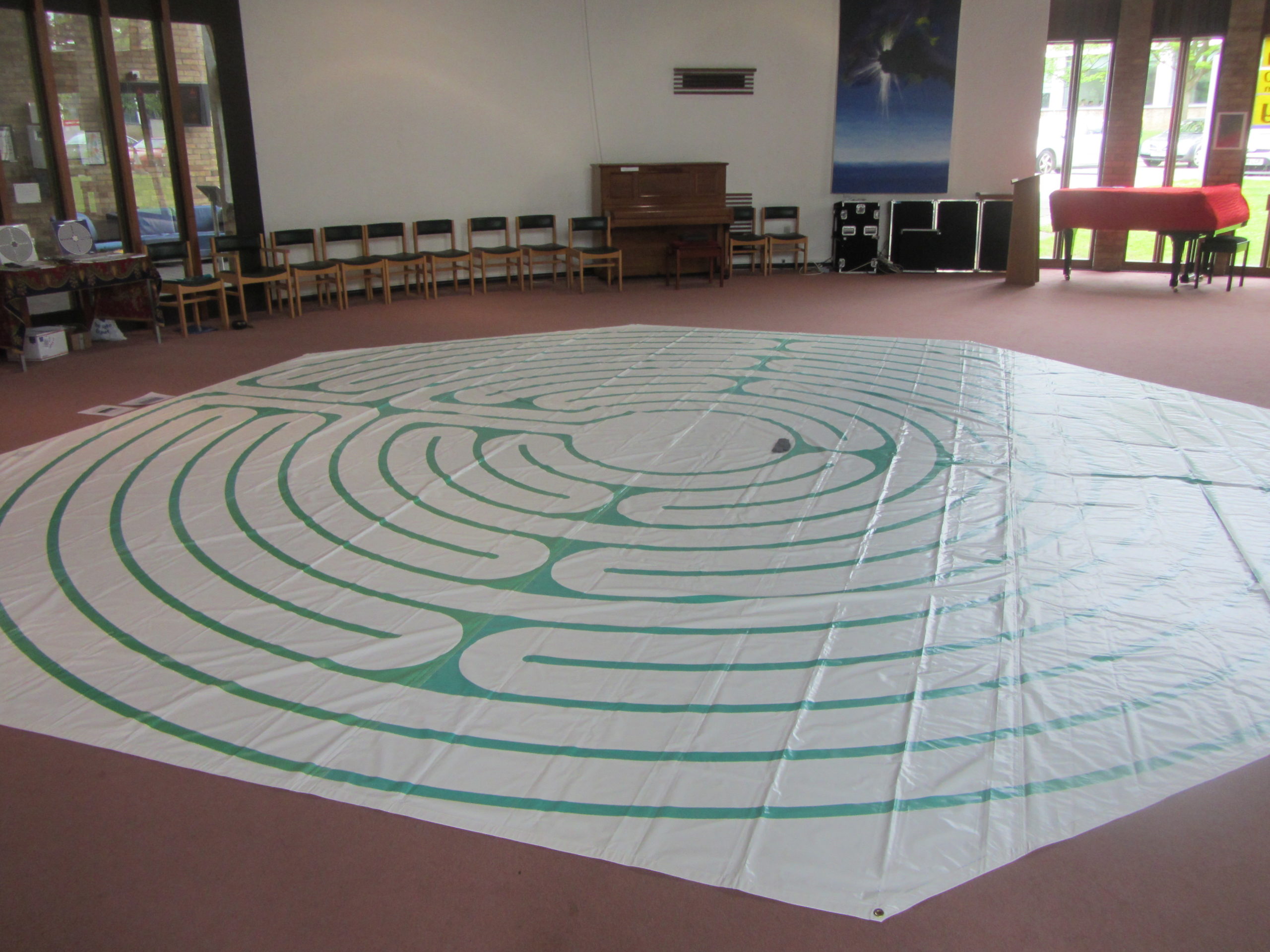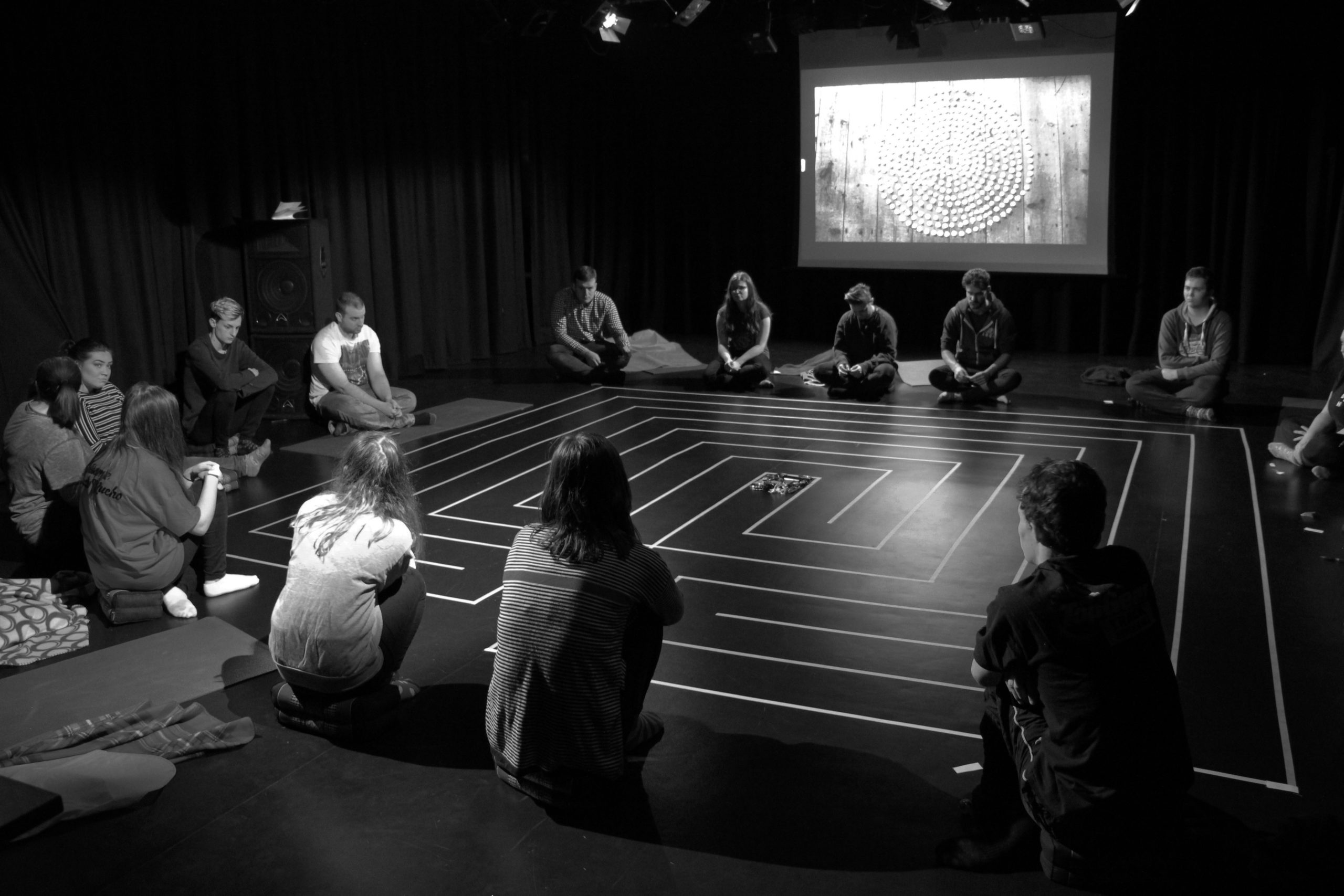‘What is my intention?’
This is one of the example questions Helen Curry suggests to walkers before they begin to walk a labyrinth (2000, p. 56). Additional questions posed range from the walker’s perception of safety (p. 86) to observing lines crossed in consciousness (p. 81).
The meandering, linear path of the labyrinth is one of the oldest patterns in human history and has been utilised in a myriad of ways, ranging from the trapping of spirits to symbolic pilgrimages to Jerusalem (Pennick, 1990). The ‘gnostic sense’ (Curry, 2000, p. 42) and pendular rhythm of walking engendered by this spatial pattern is reminiscent of what Mohammad Motahari (2008) refers to as a ‘hermeneutical spiral’ (p. 106). This challenges the conception of the ‘hermeneutical circle’ (see Heidegger, 1927 ; Gadamer, 1975;) in its assertion that the process of learning does not require us to ‘return to the same understanding of the part as before our departure’ (Motahari, 2008, p. 106). The questions the labyrinth walker asks themselves occur along this gradual circumspective journey, leading towards understanding and spiritual growth.
This introspective focus affected by the labyrinth contrasts markedly with the often outward-facing gaze found within the exploration of a maze. The questions the walker considers here are directly informed by the unpredictability of their surrounding environment. A wrong turn or forked path necessitates a recalibration of their mapping of the route as they edge closer to finding the labyrinth in the maze.
This paper will reflect on the author’s experience of the interactive audio-visual installation ‘Labyrinthe’ (2021) from Jacques Malchance and Kromavision. Its focus will be on this sense of ‘gnowing’ and knowing through the ‘state of switching flux’ between the labyrinth and the maze (McElhinney, 2010, p. 2). It argues that an active imbrication of these two topologies allows for necessary ruptures or anacolutha within the hermeneutical process.
Reference List
Curry, Helen (2000). The Way of the Labyrinth: A Powerful Meditation for Everyday Life. United States: Penguin Compass.
Gadamer, Hans-Georg. (1993) Über den Beitrag der Dichtikunst bei der Suche nach der Wahrheit. In, Gesammelte Werke, Volume 8, pp. 70-79.
Gens, Jean-Claude. (2017). The Configuration of Space Through Architecture in the Thinking of Gadamer. In: Place, Space and Hermeneutics. Germany: Springer International Publishing, pp. 157-168.
Gerster, Georg, Fisher, Adrian (1990). Labyrinth: Solving the Riddle of the Maze. United States: Harmony Books.
Kinglsley, Jenny. (2010), ‘Musing and meandering through labyrinths and mazes’ …. The Art Book, 17, pp. 90-92.
Malchance, Jacques (2021) Labyrinthe [interview] Interviewed by Kris Darby, 16th June.
McElhinney, Sam (2010) ‘Labyrinths, mazes & the spaces inbetween’. In: Cybernetics & Systems 2010: proceedings of the 20th European Meeting on Cybernetics and Systems Research. Austrian Society for Cybernetic Studies, Vienna, Austria, pp. 104-109.
Pennick, Nigel (1990) Mazes and Labyrinths, London: Robert Hale.
Solnit, Rebecca (2002) Wanderlust, London: Verso.
Gnowing me, Knowing You: Questions raised by walking the labyrinth in the maze
CC-BY-NC: Kris Darby
|
Credits
Hosted by: HUB Prespa


